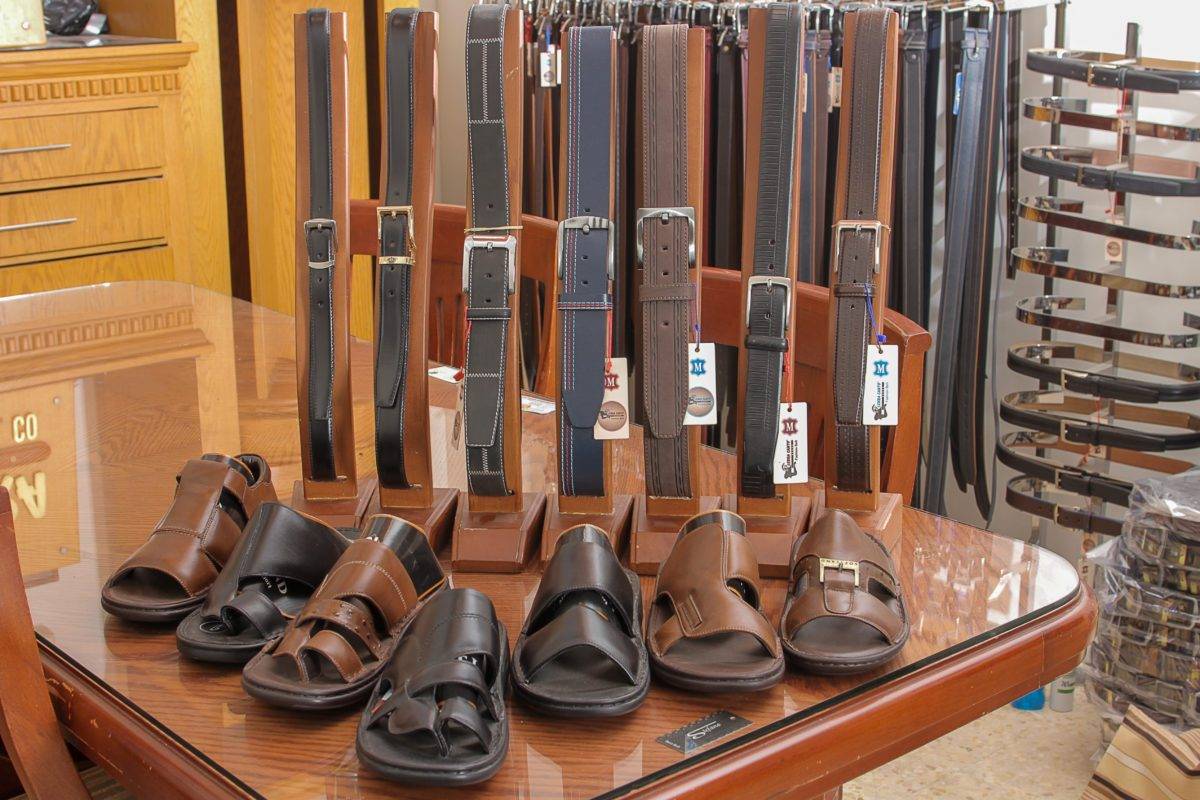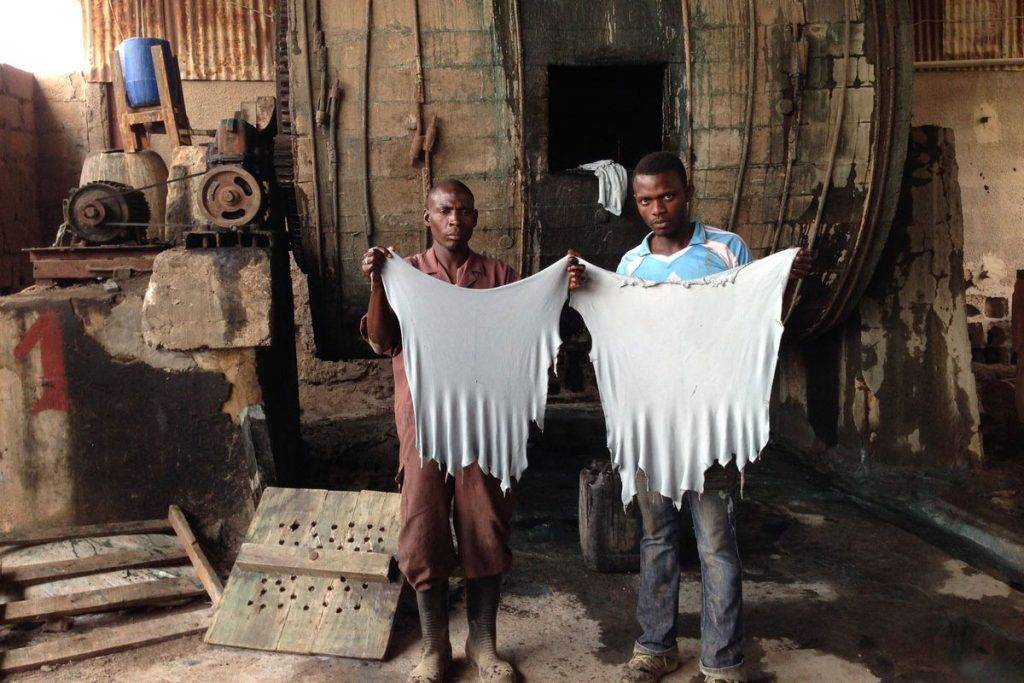Nigeria’s Leather Industry Is Growing Only As Much As It Is Getting Chewed As “Ponmo”

At the start of the week, the Italian Trade Agency unveiled its office in Lagos. The move to strengthen trade ties with the government, among other things, is to make the most of the promising Nigerian leather industry.
From tanneries to furniture stores and cobbler workrooms visited, everyone who works with leather acknowledges its economic potential in the country.
One thing they also seemingly unanimously are concerned about, though, is that cow skin is being locally consumed at a ridiculously higher price than leather itself.
Unsung, Uncelebrated Economic Hero
The leather sector of Africa’s economic powerhouse is expected to generate more than USD 1 Bn by 2025. 61 million units makes Nigeria boast of the most enormous resource of goatskin and kidskin in Africa.
This represents 46 percent and 18 percent of the West African and African total, respectively. Apart from contributing 60 percent to the production of these skins in West Africa, the domestic sector is the second major earner of foreign exchange after oil.
In 2015, Nigeria exported tanned skins worth a USD 240 Bn total. No wonder why the leather industry contributed about 24 percent of the total agriculture GDP in the nation.
Unofficial but expert opinion/analysis reveals that Nigeria tans between 40 to 50 million skins every year, and earns USD 600 to USD 800 Mn from leather export within the same timeframe. The source also says the sector’s value from Nigeria to China is USD 6 Mn to USD 8.5 Mn annually.
One would hold Italian leather in high esteem but the country alongside Spain is the largest destination of Nigerian goat-derived leather – covering more than 71 percent of total exports. Sheep-derived leather, on the other hand, is largely exported to Asian countries.
State Of The “Art”
The Nigerian leather industry is a patchwork of production clusters situated in a friendship of major cities that circle Kano, Aba, Onitsha and Lagos. These urbanities account for a huge proportion of skin activity and income in the industry.
But a threat apparently bigger than these four put together is the consumption of an innutritious, potentially harmful and economic-roasting form of meat. Locally known as ponmo, the cow or goat skin can be found in just about every local and fancy restaurant in the country.

Called the delicious silent killer, the attractive roll of animal skin has become some sort of staple delicacy in the Nigerian gastronomic ecosystem. Laced with fresh pepper, evenly oiled and decorated with a platoon of saluting toothpicks, ponmo is a quick snack not every one can resist.
It has no nutrients, but that is no downside to anyone. Considering that NAFDAC has warned against eating certain types of it, it’s evident just how much harm chemical-laced and even imported skin can cause to health. But no one seems to give ear to something obviously preventing the Nigerian leather industry from achieving its full potential.
“Nigeria is losing out in the pack of countries competing for the USD 75 Bn dollar global leather industry because of ponmo consumption, says Olufemi Aluko of the Faculty of Clinical Sciences, Obafemi Awolowo University (OAU).
Tanneries Versus Ponmo Sellers
There’s been an overtime reduction in the number of commercial leather tanneries in the country from over 40 in the year 2000 to just 18. The thanks for this goes to the neglect and lack of policy coordination from various tiers of government.
The existing tanneries produce over 8 million square meters of processed leather with over 95 percent of such products for the export market solely. It’s a well-known fact that leading finished leather goods manufacturers and designers rely on processed leather from Nigeria today.
But the tanneries have a formidable competitor – ponmo sellers. The issue is more prevailing in the Southwestern part of Nigeria, a pack of Yoruba-dominated states; Ekiti, Lagos, Ogun, Ondo, Osun and Oyo.

Emmanuel Ugbodaga, the National Coordinator of Nigeria’s Footwear, Leather and Textile Festival (in Abuja) feels that the lack of policy to put the Nigerian leather industry at its best is just as disturbing as the consumption of ponmo in some parts of the nation.
“The challenge is further exacerbated by the fact that retailers earn five times more when leather is sold as ponmo for human consumption compared to when it’s sold to tanneries for leather production,” Emmanuel told WeeTracker.
One million pairs of shoes are produced by more than 80,000 leather makers in Aba each week. If they’re sold for NGN 2,500 per pair, it could bring NGN 120 Bn to the industry. But as consumed food, it’d be sold five times higher, but with no impact on the leather sector.
Awareness
The rate of cattle slaughter in places like Oko Oba Abattoir has gone up to 2,000 cows daily. The more these animals hit the ground, the more cattle hide is available. But rather than contributing to GDP somehow, they end up eaten.
In Lagos alone, an average of 15,000 sheep and goats are slaughtered each day, which should mean the state alone can fetch over USD 5 Bn in value-added products. In Nigeria, an average of 3,0oo cows meet their end on a daily basis.
Should these kills’ hides be used for leather products, they would bring in NGN 624 Bn (USD 1,709,589,024) locally, asides from foreign exchange and the number of jobs created.
“The onus thus lies on the government to create the needed awareness on the health implications of this hazardous lifestyle that has almost become a culture for some.
This appears to be one strategy to combat the use of for meals , and with reduced demand we could access more leather for productive uses,” Emmanuel explained.
Should people be aware that consumption means we eat several jobs as the leather sector today employs over 750,000 people the benefits for productive uses as against mere meal becomes apparent to all.
High Cost
Why is the cost of leather sometimes high in Nigeria? That depends on how you look at it and the factors at play – even Boko Haram insurgency. The fluctuation affects everything from furniture to shoes, and jackets to bags. The market is largely unregulated compared to that of Italy and Spain.
There’s no appropriate model which makes the market tick for manufacturers, who as such much deal with a multiplicity of illegal levies from locals, market boards and rogue-like youth associations. These dubious levies are overbearing because local tanneries need to buy other materials such as dye, pigments and derivatives.
“The factors are cross-cutting and not unique to the leather industry alone. Some of which include lack of infrastructure such as energy, road/rail networks, lack of adequate skilled manpower for high tech leather production amongst others, “ Emmanuel opined.
Nigeria’ exports over 95 percent of processed leather with a meagre 5 percent left for the local market. This is inadequate and has to be augmented with imported leather to fill in the gap. However, importation entails use of scary forex, which builds up costs as well.
Does the consumption of ponmo have anything to do with the high cost of leather? Both sectors seem to have separated significantly over the years.
Since the proceeds from selling skin as food alarmingly higher, there’s every likeliness leather itself would struggle to break even if a ban isn’t placed on ponmo sales. There’s no huge direct impact on leather production, but the effects on the industry are forceful.